 00:14:00
00:14:00
The Enlightenment is Under Threat and Lindau Alumni for Humanitarian Action (LAHA) Can Save It
Kant, in possibly his most celebrated essay, defined the Enlightenment as: Man’s emergence from his self-imposed period of immaturity. This immaturity is the inability to use one's own understanding without another's guidance. Without the freedom t....
More details | Watch now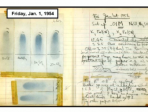 00:35:00
00:35:00
Ideas Come from Many Places
Come share with me the memories of where ideas have come from during my life - from childhood to old age. You may find it helpful in encouraging your own brains to come up with new ideas. They won't all be useful - as I have found in this case of min....
More details | Watch now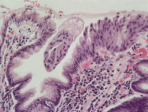 00:44:00
00:44:00
The Discovery of Helicobacter
Before the 1970s, well fixed specimens of gastric mucosa were rare. Then the flexible endoscope was introduced. This enabled gastroenterologists to take numerous well-fixed small biopsies from the stomach. Gastric histology and pathology were clearly....
More details | Watch now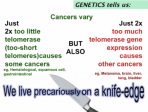 00:35:00
00:35:00
Telomeres: Telling Tails
Telomeres protect chromosome ends and help stabilize the genome. Throughout human life and in aging, telomeres often erode down, eventually causing cells to malfunction or die. The highly regulated cellular enzyme telomerase adds telomeric DNA to tel....
More details | Watch now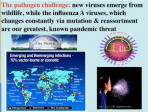 00:29:00
00:29:00
The Killer Defence
Immune surveillance by virus-specific CD8+ cytotoxic T lymphocytes (CTLs), or killer T cells, has long been known to be central to the control of acute infections and some cancers, though the role of CTL memory in the rapid recall of immune protectio....
More details | Watch now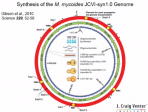 00:31:00
00:31:00
Minimizing a Bacterial Genome by Global Design and Synthesis
In 2010, we chemically synthesized the 1078 Kb Mycoplasma mycoides genome and transplanted it into a recipient cell cytoplasm to create a 'synthetic cell', JCVI-syn1.0 (Science, 329, 52-56, 2010). We identified several hundred non-essential genes by ....
More details | Watch now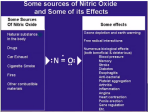 00:39:00
00:39:00
Role of Nitric Oxide and Cyclic GMP in Cell Signaling and Drug Development
Nitric oxide research has grown rapidly with about 150,000 research publications describing its biological effects. It is an important messenger molecule that affects most tissues and biological processes. Many effects of nitric oxide are mediated by....
More details | Watch now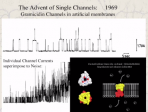 00:30:00
00:30:00
Ion Channels: Their Discovery, their Function and their Role in Diseases
The concept of bioelectricity emerged in the late 18th century, based on the experiments of Galvani and Volta. Sixty years ago, Hodgkin and Huxley showed that the nerve impulse is a result of permeability changes of the nerve membrane. This raised th....
More details | Watch now 00:31:00
00:31:00
The Origins of Cellular Life
The complexity of modern biological life has long made it difficult to understand how life could emerge spontaneously from the chemistry of the early earth. We are attempting to synthesize simple artificial cells in order to discover plausible pathwa....
More details | Watch now 00:30:00
00:30:00
The Origin of Reversible Protein Phosphorylation as a Regulatory Mechanism
Reversible protein phosphorylation can be considered one of the most prevalent mechanism by which eukaryotic cellular events are regulated. It is directly involved in numerous pathological conditions, and bacterial and viral diseases. This process wa....
More details | Watch now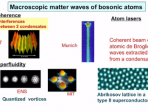 00:31:00
00:31:00
The Adventure of Cold Atoms. From Optical Pumping to Quantum Gases
Conservation laws are very important in quantum physics. Two examples of applications will be given. First, optical pumping which uses transfer of angular momentum from polarized photons to atoms to produce highly polarized atomic gases. Then, laser ....
More details | Watch now 00:27:00
00:27:00
A Crime against Humanity
When Monsanto first tried to introduce GMO seeds into Europe there was a backlash by the Green parties and their political allies, who feared that American agro-business was about to take over their food supply. Thus began a massive campaign not agai....
More details | Watch now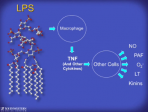 00:31:00
00:31:00
Finding Mutations that Affect Immunity
Beginning with an exception to normal function caused by a genetic aberration, one may hope to find at least one protein with non-redundant function in a certain biological process. This approach permitted the identification of the receptor for bacte....
More details | Watch now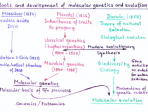 00:34:00
00:34:00
Insight into the Laws of Nature for Biological Evolution
Both evolutionary biology and genetics have their roots 150 years ago in work with phenotypic variants of plants and animals. In contrast, microbial genetics originating as recently as the 1940s, rapidly revealed that filamentous DNA molecules are th....
More details | Watch now 00:29:00
00:29:00
From Proto-oncogenes to Precision Oncology
The diagnosis, classification, and treatment of human cancers are being transformed by scientific discoveries that were strongly influenced by the discovery of the c-src proto-oncogene, as described in the lecture by Michael Bishop. The path to this ....
More details | Watch now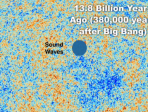 00:33:00
00:33:00
The State of the Universe
Our Universe was created in 'The Big Bang' and has been expanding ever since. Brian Schmidt describe the vital statistics of the Universe, including its size, weight, shape, age, and composition. He also tries to make sense of the Universe's past, pr....
More details | Watch now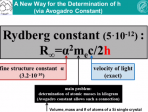 00:29:00
00:29:00
A New Kilogram in 2018: The Biggest Revolution in Metrology Since the French Revolution
Metrology - the science of measurements - is responsible for the international uniformity and precision in standards. Today, the seven units for meter, kilogram, second, ampere, kelvin, mole, and candela of our international system of units (SI units....
More details | Watch now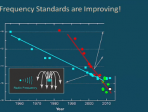 00:33:00
00:33:00
What About Redefining Time Using a Stable Laser?
Several laser-based Atomic Clocks now have an accuracy potential of ~2 x10-18, a hundred-fold better than the best achieved after more than 60 years' experience with rf resonances in Cs atoms. Still, this long attention span documents that the Cs Fou....
More details | Watch now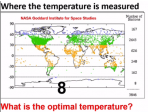 00:30:00
00:30:00
Global Warming Revisited
Because of the following statement from the American Physical Society: “The evidence is incontrovertible: Global warming is occurring. If no mitigating actions are taken, significant disruptions in the Earth's physical and ecological systems, s....
More details | Watch now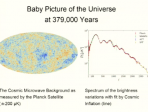 00:31:00
00:31:00
Cosmic Microwave Background Radiation and its Role in Cosmology
In the first half of the 20th century other galaxies were recognized, their red shift measured and theories of the whole universe were developed. They included Big Bang and Steady State. Arno Penzias and I found the Cosmic Microwave Radiation (CMB) i....
More details | Watch now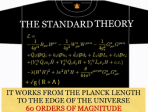 00:44:00
00:44:00
The Future of Particle Physics
Elementary Particle Physics seeks to discover the basic constituents of matter and understand the fundamental forces that act on them. In this lecture I shall review the current state of particle physics, the grand success of the ñstandard modelî, ....
More details | Watch now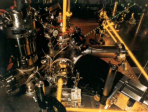 00:35:00
00:35:00
A Random Walk in Science
I will discuss my random walk in science, from my graduate student on postdoctoral years testing the Weinberg-Salam-Glashow theory of electro-weak forces, and then to energy transfer in condensed matter systems, the spectroscopy of positronium, laser....
More details | Watch now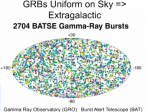 00:30:00
00:30:00
Gamma Ray Bursts: Windows on the Universe
Gamma-Ray Bursts are the most powerful explosions in the universe. They happen about once per day in the visible universe. Their fantastic engines pump out as much energy in a matter of seconds as all the stars in a galaxy do in a billion years. This....
More details | Watch now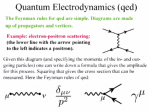 00:37:00
00:37:00
Discovery of the Higgs Particle
Recently the Higgs particle has been discovered at CERN. This particle was theoretically predicted. The historical development of field theory, leading to this prediction will be discussed.
More details | Watch now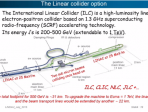 00:29:00
00:29:00
Future Accelerators for Astro-Particle Physics
One of the most remarkable results of astro-particle Physics has been the success of the Standard Model, recently culminated in the discovery of the Higgs particle (Ho). However, the Ho is observable only in few channels at the LHC, in the presence o....
More details | Watch now 00:35:00
00:35:00
The International Year of Light: Celebrating Fifty Years of Laser Revolution in Physics
The year 2015 has been named the International Year of Light, to mark milestones in the science of light which occurred 1000, 200, 150, 100 and 50 years go. I was a young student in physics in 1965, when the cosmic radiation background was discovered....
More details | Watch now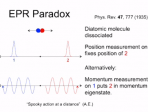 00:39:00
00:39:00
Light Quanta and Their Idiosyncrasies
Maxwell's electromagnetic theory (now 150 years old) seemed in its comprehensive way to be capable of answering all of the questions one might ever pose about the theory of light. But that spell was broken in 1900 by Planck's discovery that light bea....
More details | Watch now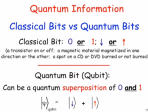 00:31:00
00:31:00
Quantum Information: a Scientific and Technological Revolution for the 21st Century
Two of the great scientific and technical revolutions of the 20th century were the discovery of the quantum nature of the submicroscopic world, and the advent of information science and engineering. Both of these have had a profound effect not only o....
More details | Watch now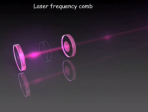 00:35:00
00:35:00
Science with Combs of Light
The spectrum of a frequency comb, commonly generated by a mode-locked femtosecond laser, consists of several hundred thousand precisely evenly spaced spectral lines. Such laser frequency combs have revolutionized the art of measuring the frequency of....
More details | Watch now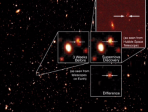 00:33:00
00:33:00
What We Learn When We Learn that the Universe is Accelerating
The 1998 discovery that the universe's expansion is accelerating was not only unexpected, but it also led to the postulation of a previously-unknown 'dark energy' forming almost three-quarters of the "stuff" of the universe. How was this discovery ma....
More details | Watch now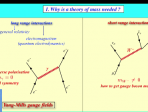 00:33:00
00:33:00
The Origin of Elementary Particle Masses
In the beginning of the 60s, the laws of classical general relativity, Einstein's generalisation of Newtonian gravity, and of quantum electrodynamics, the quantum version of Maxwell's electromagnetic theory, were known. These laws describe long range....
More details | Watch now 00:33:00
00:33:00
Nanoscopy – allowing molecules to be examined inside living cells
Eric Betzig shared the 2014 Chemistry Nobel prize with fellow American William E. Moerner and Romanian-German Stefan W. Hell for revolutionising science through the development of super-resolved fluorescence to exceed the accepted limits of tradition....
More details | Watch now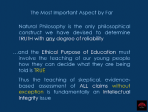 00:30:00
00:30:00
The Hunt May Be Up for the Carrier of the Diffuse Interstellar Bands and other stories
The development of radio telescopes has revolutionized our understanding of the molecular constitution of the interstellar medium ISM. A recent surprise that the element carbon had up its sleeve was the existence of C60, Buckminsterfullerene, the thi....
More details | Watch now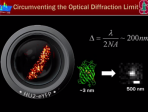 00:32:00
00:32:00
Fun with Light and Single Molecules
More than 25 years ago, single molecules were first detected optically, but how do we really detect a single molecule today, and what good is it? It is an amazing fact that you can even detect single molecules with your own eyes. When a new regime of....
More details | Watch now 00:32:00
00:32:00
Tickling Worms – Surprises from Basic Research
Research, at least my research, has never been linear. I have found that my lab and I often double back on problems after years of inactivity or go off in entirely new directions as dictated by the work and people's interests This lack of direction r....
More details | Watch now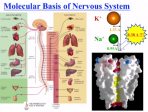 00:29:00
00:29:00
How to Model the Action of Complex Biological Systems on a Molecular Level
Despite the enormous advances in structural studies of biological systems we are frequently left without a clear structure function correlation and cannot fully describe how different systems actually work. This introduces a major challenge for compu....
More details | Watch now 00:29:00
00:29:00
Electron Transfer Theory in Single Molecule Studies of Intermittent Fluorescence of Quantum Dots and in Initial Steps in Dye Sensitized Solar Cells
Intermittently fluorescing single molecule systems are found in many materials, including semiconductor quantum dots (QD), dyes on crystalline or nanoparticle film surfaces, and biological systems. The QD's show a ~ -3/2 power law for the distributio....
More details | Watch now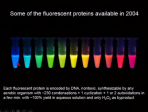 00:33:00
00:33:00
Molecules Against Cancer or for Long-Term Memory Storage
For cancer diagnosis and therapy, we are developing activatable cell penetrating peptides (ACPPs), synthetic molecules with a novel amplifying mechanism for homing to diseased tissues. ACPPs are polycationic cell penetrating peptides whose cellular u....
More details | Watch now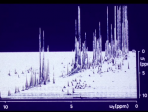 00:26:00
00:26:00
NMR in Biology, Chemistry and Medicine
For the discovery of the physics phenomenon of nuclear magnetic resonance (NMR), Felix Bloch and Edward Purcell were awarded the Nobel Prize in Physics in 1952. NMR has then been used in a wide range of fundamental studies in physics, and in the 1960....
More details | Watch now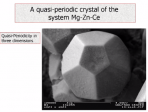 00:30:00
00:30:00
Quasi-Periodic Crystals
Quasicrystals - or, as Shechtman would prefer, quasi-periodic materials - now have scientists thinking about matter in a new light, but they also have many possible practical applications. Because of their uneven structure, quasicrystals do not have ....
More details | Watch now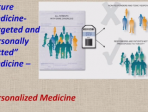 00:29:00
00:29:00
Are We Going to Cure all Diseases and at What Price?
We are exiting the era where our approach to treatment of these and many other diseases is 'one size fits all', and enter a new era of 'personalized medicine' where we shall tailor the treatment according to the patient's molecular/mutational profile....
More details | Watch now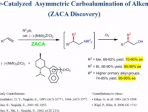 00:35:00
00:35:00
How to Synthesize a Wide Variety of Optically Active Compounds with >99% Optical Purity
The discovery and synthetic applications of a widely applicable and highly enantioselective (>99% ee) protocol consisting of the 'ZACA reaction' (Zr-catalyzed asymmetric carboalumination of alkenes), purification of the ZACA-products by lipase-cat....
More details | Watch now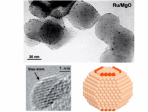 00:31:00
00:31:00
Catalysis at Surfaces: From Atoms to Complexity
This lecture addresses the question if spatio-temporal self-organisation of matter which is so characteristic for living systems can also be verified with a simple inorganic reaction in which the observed phenomena of complexity can be traced back to....
More details | Watch now 00:27:00
00:27:00
Roles of the Ubiquitin System in Health and Disease
The selective degradation of many short-lived proteins in eukaryotic cells is carried out by the ubiquitin-mediated proteolytic system. In this pathway, proteins are targeted for degradation by covalent ligation to ubiquitin, a highly conserved small....
More details | Watch now 00:31:00
00:31:00
Structural Aspects of Protease Control in Health and Disease
This lecture starts out with a very brief review of the history of protein crystallography and continue with our studies since 1970 on proteolytic enzymes and their control. Proteolytic enzymes catalyse a very simple chemical reaction, the hydrolytic....
More details | Watch now 00:31:00
00:31:00
Where am I From? Where Are You Going?
Scientific research is a never-ending 'journey of knowledge'. There is more meaning in experiencing various encounters and making a good journey itself than reaching the destination. Basic science has eternal cultural value; it has served to heighten....
More details | Watch now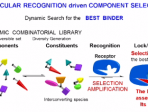 00:33:00
00:33:00
Towards Adaptive Chemistry
Molecular chemistry implementing reversible chemical bonds between atoms in molecules, as well as supramolecular chemistry, whose molecular components are held together by intermolecular interactions, are able to undergo a continuous change in consti....
More details | Watch now 00:32:00
00:32:00
Aquaporin Water Channels – From Atomic Structure to Malaria
Aquaporin channels allow water to rapidly cross cell membranes in all living organisms. AQP1 confers red cells and proximal renal tubules with high water permeability. Present in renal collecting duct, AQP2 is regulated by vasopressin, and human muta....
More details | Watch now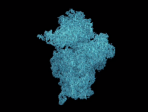 00:31:00
00:31:00
Seeing is Believing – A Hundred Years of Visualizing Molecules
It has been a hundred years since molecules were first visualized directly by using x-ray crystallography. That gave us our first look at molecules as simple as common salt to one as complex as the ribosome that has almost a million atoms. In the las....
More details | Watch now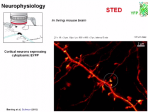 00:28:00
00:28:00
Optical Microscopy – the Resolution Revolution
Throughout the 20th century it was widely accepted that a light microscope relying on conventional optical lenses cannot discern details that are much finer than about half the wavelength of light (200-400 nm), due to diffraction. However, in the 199....
More details | Watch now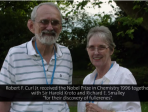 00:34:00
00:34:00
The Dawn of the Fullerenes: A Research Adventure
When he received the 1996 Nobel Prize in Chemistry together with Richard E. Smalley (who also worked at Rice) and Sir Harold Kroto (at the time at the University of Sussex, UK), this was a true example of national and international scientific collabo....
More details | Watch now 00:32:00
00:32:00
C60-Buckminsterfullerene: Not just a Pretty Molecule
Amongst the Nobel Laureates lecturing in Lindau, Sir Harold Kroto would probably earn the award for the most unusual and characteristic way of presenting. This lecture, which is the first he ever gave in Lindau, is no exception. Kroto`s way of presen....
More details | Watch now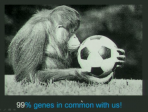 00:29:00
00:29:00
Créativité Sans Frontières
Children are not the only ones who instinctively appreciate the elegant beauty of highly symmetric structures such as the soccer ball and “play” with them. Artists, architects, scientists, mathematicians and engineers are also fascinated by elega....
More details | Watch now 00:35:00
00:35:00
Science – Lost in Translation?
This presentation explores the way in which the ideas and advances of people like Copernicus, Galileo and Kepler to Newton and Leibniz laid the foundations of Science. The Enlightenment was a byproduct of this philosophical breakthrough and right f....
More details | Watch now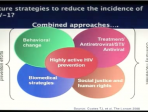 00:31:00
00:31:00
HIV, a Discovery Highlighting the Global Benefit of Translational Research
The fantastic progress made in medicine led the scientific community to hope about the complete eradication of infectious diseases in the middle of the 20th century. The sudden emergence of AIDS in the early 80's cruelly reminded us that this dream ....
More details | Watch now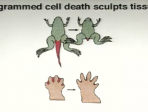 00:33:00
00:33:00
Programmed Cell Death in Development and Disease
Programmed cell death (often referred to as apoptosis) is a normal feature of animal development and tissue homeostasis. The misregulation of cell death has been implicated in a diversity of human disorders, including cancer, autoimmune diseases, he....
More details | Watch now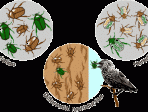 00:42:00
00:42:00
Natural Selection and the Future of Life
In his lecture Professor Christian Rene de DuvŽ gives a rough overview on the history of life starting about 3.5 billion years ago with the first cells up to the appearance of the first primates 70 million years ago, and he states that all organisms....
More details | Watch now 00:45:00
00:45:00
On the Genetic Basis of Morphological Evolution
Darwin's theory of evolution states that variation of the shape and pattern of the adults rather than the embryos are the basis for natural selection. In order to understand how morphological variation arises, it is important to identify the genes th....
More details | Watch now 00:28:00
00:28:00
DNA between Physics and Biology
The association of DNA with water is known since the deciphering of its double helical structure by X-Ray diffraction in 1953 (Watson, Crick, Wilkins and Franklin). However the power of DNA for organizing water seems to go far beyond the direct fill....
More details | Watch now 00:32:00
00:32:00
Cultural Values of Scientific Knowledge
The acquisition of scientific knowledge largely depends on the availability of appropriate research approaches and methodologies. Novel scientific knowledge represents cultural values. On the one hand, it enriches our world-view with impacts on our....
More details | Watch now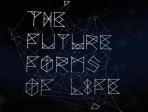 00:31:00
00:31:00
The Future of Life
Ever since its first appearance, more than 3.5 billion years ago, life has evolved without guiding plan, propelled by: 1) its own intrinsic properties, which, with the help of outside energy, provided the necessary driving force; 2) accidental geneti....
More details | Watch nowFrom the Structure of the Ribosome to the Design of New Antibiotics
Structural studies of the ribosome exemplify the evolution of structural studies in cell biology from the early negatively stained images of macromolecular assemblies in whole cells, to a detailed atomic understanding of the mechanism of action of a ....
More details | Watch nowDiscovery of Nitric Oxide and Cyclic GMP in Cell Signalling and their Role in Drug Development
The role of nitric oxide in cellular signaling in the past three decades has become one of the most rapidly growing areas in biology. Nitric oxide is a gas and a free radical with an unshared electron that can regulate an ever-growing list of biolog....
More details | Watch now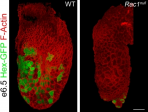 00:29:00
00:29:00
The Lability of the Differentiated State
Many classical studies have shown that cell fates become progressively restricted during development and that this restriction is typically irreversible. This has led to the dogma of the Stability of the Differentiated State: cells cannot typically ....
More details | Watch now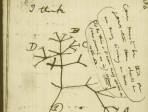 00:35:00
00:35:00
Updated Notions on Darwinian Evolution
Charles Darwin had based his theory of biological evolution on the observation that phenotypic variants of a given species can sometimes over-grow their parental population, and he attributed this to selective advantage, i.e., to the impact of natura....
More details | Watch now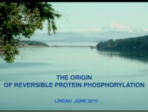 00:29:00
00:29:00
Protein Cross Talk in Cell Signaling
The main focus of the talk will be on signaling by tyrosine phosphorylation, which has been directly implicated in the regulation of cell growth, differentiation and transformation. External signals coming in the form of mitogenic hormones and growt....
More details | Watch nowSignals and Signalling Mechanisms in the Central Nervous System
Our brain is a network of about 10^11 neurons, which are connected by synapses. A neuron typically receives input from about 10000 other neurons, which can be either excitatory or inhibitory. The neuron integrates these inputs and generates an 'act....
More details | Watch nowInfections in the Etiology of Human Cancers
During the past century a number of chemical and physical risk factors for human cancers have been identified. Only relatively recently, mainly during the past 30 years, infectious agents have been identified as important human carcinogens. Besides....
More details | Watch now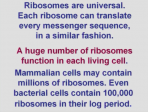 00:41:00
00:41:00
Climbing the Everest Beyond the Everest
The challenges associated with pursuing ribosomal crystallography can be described as a series of Everest climbing. At each step, when reaching the summit, a taller and more difficult one became exposed. Snapshots of this story will be described.__....
More details | Watch nowTelomeres and Telomerase in Human Health and Disease
Telomeres are the protective tips that stabilize the ends of chromosomes. The function of telomeres is to allow cells to divide while holding the genetic material intact. Telomeres contain specialized, simple repetitive DNA sequences that, together....
More details | Watch now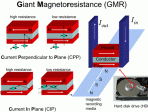 00:38:00
00:38:00
Humanity in the Cosmos
In the recent past, rapid scientific and technological developments have had tremendous impact on human society. Notably the pc, internet and mobile telephony changed the world and shrank our planet. These developments are vastly different from the....
More details | Watch now 00:31:00
00:31:00
From Millisecond to Attosecond Laser Pulses
A historical overview is presented of the experimental development of ever shorter laser pulses from 1960 to the present. Already in the early sixties nanosecond pulses were achieved and the entry into the picosecond domain was reached in the late s....
More details | Watch now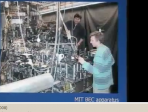 00:25:00
00:25:00
Role of Cortical Noise in Vision
Our brains are always generating electrical signals, even if we close our eyes, plug our ears, and lie in a warm bath. These signals are called cortical noise because they don't correlate with any sensation or thought of which we are aware. I will ....
More details | Watch now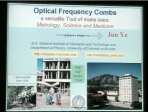 00:36:00
00:36:00
The Individuality of Light Quanta
Light quanta are the fundamental units of radiant energy. When propagating freely they travel at the fastest attainable speed and live forever. These properties recommend them as the ideal messengers for communication of all sorts. Ordinary light ....
More details | Watch now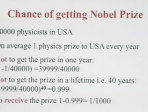 00:27:00
00:27:00
Which Way For Physics?
This talk describes a new approach to the problem of characterising physical reality, one with the potential to fill in gaps in the conventional understanding of nature. It is based on a different view from the usual one of structure at the finest l....
More details | Watch now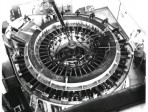 00:35:00
00:35:00
How Advances in Science are Made
How advances in science are made, and how they may come to benefit mankind at large are complex issues. The discoveries that most influence the way we think about nature seldom can be anticipated, and frequently the applications for new technologies....
More details | Watch now 00:44:00
00:44:00
The Impact of Big Science on Astrophysics
The Chandra and Hubble Telescopes are in space and each costs (through operations) several billion dollars. VLT is on the ground but over 20 years of operations will also cost in excess of a billion. They all fall therefore in the category of what ....
More details | Watch now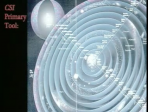 00:35:00
00:35:00
The Large Hadron Collider and the Super World
In the period 1990 to 2001 many powerful new astronomical observational facilities have become operational. Hubble Space telescope was launched in 1990; it was followed by the construction of Keck I in 1992 and Keck II in 1996, by the completion of....
More details | Watch now 00:40:00
00:40:00
The Beginning and Development of the Universe
By careful investigation of relic left on the cosmic scene we have very good evidence and constraints on what has occurred since the beginning of the Universe. This talk reviews the evidence including images and information from the very first light....
More details | Watch now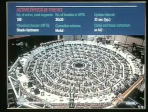 00:32:00
00:32:00
What Future for Energy and Climate?
We are using the planet's fossil fuel resources in a time which is very short compared to that of human evolution. In the same process we are changing the planet's climate and sea level, threatening the future of large segments of the global populat....
More details | Watch now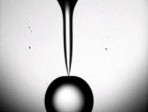 00:30:00
00:30:00
The Development of Particle Physics
Particle physics mainly developed after World War II. It has its roots in the first half of the previous century, when it became clear that all matter is made up from atoms, and the atoms in turn were found to contain a nucleus surrounded by electro....
More details | Watch now 00:29:00
00:29:00
Discovery of Superconducting Tunneling
I had the great fortune to receive a Nobel Prize in Physics for using electron tunneling to measure the energy gap in superconductors. In this talk I will recollect some of the events that led to this discovery and hopefully I will be able to convey....
More details | Watch now 00:32:00
00:32:00
The Optical Frequency Comb – a Really Versatile Tool
The Optical Frequency Comb concept and technology exploded in 1999-2000 from the synthesis of advances in independent fields of Laser Stabilization, UltraFast Lasers, and NonLinear Optical Fibers. The Comb was developed first as a method for optical....
More details | Watch now 00:29:00
00:29:00
Towards a Quantum Laboratory on a Chip
Microfabricated magnetic traps, waveguides, and other elements for the manipulation of ultracold atoms can be combined to form a quantum laboratory on a chip. Devices such as miniaturized atom lasers, atom interferometers, and atomic clocks have been....
More details | Watch now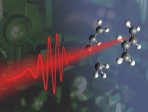 00:33:00
00:33:00
Cold Atomic Gases: the Intersection of Condensed Matter and Atomic Physics
During the past decade laser cooling and evaporative cooling of atoms have produced quantum degenerate gases both of bosons (Bose-Einstein condensates) and of fermions (gases with temperatures below the Fermi temperature). Such gases can provide ana....
More details | Watch now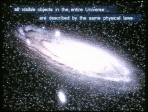 00:34:00
00:34:00
From Spinwaves to Giant Magnetoresistance (GMR) and Beyond
Standing spinwaves and surface waves in layered magnetic structures can be used for the detection and quantitative evaluation of interlayer exchange coupling (IEC). Using this method antiferromagnetic IEC has been found in Fe/Cr/Fe layered structure....
More details | Watch now 00:37:00
00:37:00
Where Do Ideas Come From?
At many times in your scientific lives, you will hopefully have ideas - good or not so good- that will determine what you will do next. Where do ideas come from? My intention is to tell you where some of mine came from, and particularly those when I....
More details | Watch now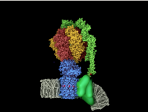 00:37:00
00:37:00
Generating the Fuel of Life
The lecture will be devoted to the topic of how the biological world supplies itself with energy to make biology work, and what medical consequences ensue when the energy supply chain in our bodies is damaged or defective. We derive our energy from ....
More details | Watch now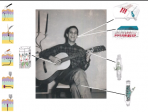 00:32:00
00:32:00
Tickling Worms: Surprises From Basic Research
Research, at least my research, has never been linear. I have found that my lab and I often double back on problems after years of inactivity or go off in entirely new directions as dictated by the work and peoples interests. This lack of direction....
More details | Watch now 00:31:00
00:31:00
Biological Evolution in the Context of Cosmic Evolution and of Cultural Evolution
After reconsidering the very long time periods in cosmic evolution, we will focus our attention to the evolutionary development of living organisms on our planet Earth. The genetic variants (mutations), which are occasionally produced, are alteratio....
More details | Watch now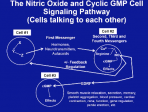 00:42:00
00:42:00
Discovery of Nitric Oxide and Cyclic GMP in Cell Signaling and Their Role in Drug Development
The role of nitric oxide in cellular signaling in the past three decades has become one of the most rapidly growing areas in biology. Nitric oxide is a gas and a free radical with an unshared electron that can regulate an ever-growing list of biolog....
More details | Watch now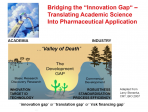 00:33:00
00:33:00
Structural Biology and its Translation into Practice and Business: My Experience
As a student in the early 1960s, I had the privilege to attend winter seminars organized by my mentor, W. Hoppe, and by M. Perutz, which took place in a small guesthouse in the Bavarian-Austrian Alps. The entire community of a handful of protein cry....
More details | Watch now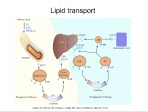 00:34:00
00:34:00
Structural Studies on Cholesterol Transport
Cholesterol has two essential functions in our bodies: It is an important component of cell membranes and it serves as the starting material for the synthesis of bile acids, steroid hormones, and other compounds. The human body obtains necessary cho....
More details | Watch now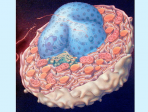 00:29:00
00:29:00
Membrane Proteins: Importance, Functions, Mechanisms
Biological membranes define and compartmentalize the cells of higher organisms. Consisting of membrane proteins and lipids, they are basically impermeable for ions and polar substances, so that electric voltages (_membrane potentialsî) and substanc....
More details | Watch now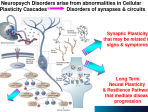 00:42:00
00:42:00
Short-term Synaptic Plasticity
Our brain is a network of about 10^11 neurons, which are connected via synapses. A neuron typically receives input from about 10000 other neurons, which can be either excitatory or inhibitory. The neuron integrates these inputs and generates an actio....
More details | Watch now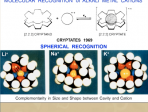 00:34:00
00:34:00
Towards Adaptive Chemistry
Supramolecular chemistry lies beyond molecular chemistry. It aims at implementing highly complex chemical systems from molecular components held together by non-covalent intermolecular forces and effecting molecular recognition, catalysis and transp....
More details | Watch now
